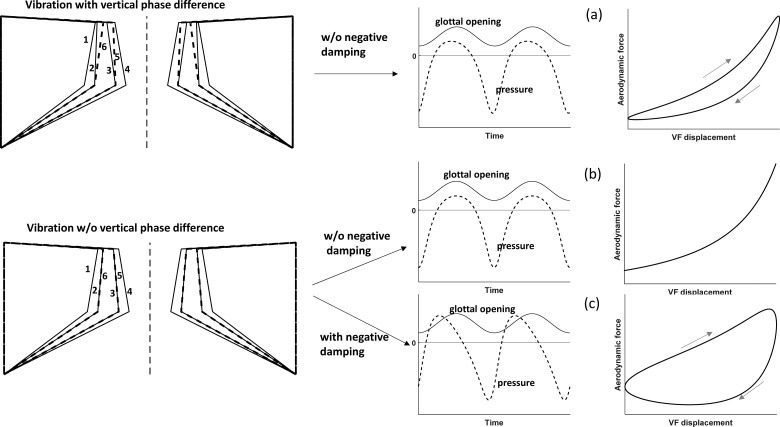FIG. 5.
Two energy transfer mechanisms. Top row: the presence of a vertical phase difference leads to different medial surface shapes between glottal opening (dashed lines 5 and 6; upper left panel) and closing (solid lines 2 and 3) when the lower margin of the medial surface crosses the same locations, which leads to higher air pressure during glottal opening than closing and net energy transfer from airflow into vocal folds at the lower margin of the medial surface. Middle row: without a vertical phase difference, vocal fold vibration produces an alternatingly convergent-divergent but identical glottal channel geometry between glottal opening and closing (bottom left panel), thus zero energy transfer (middle row). Bottom row: without a vertical phase difference, air pressure asymmetry can be imposed by a negative damping mechanism.

